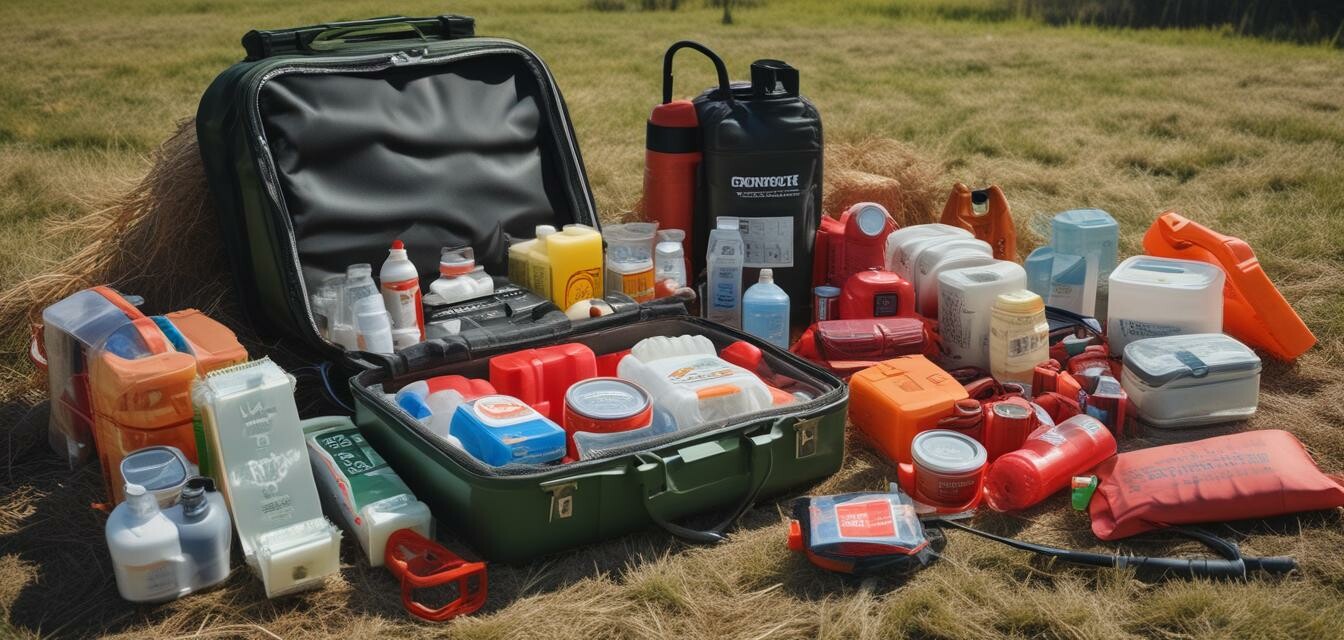
Family Preparedness: Creating Kits for Everyone
Key Takeaways
- Understanding individual needs is essential for effective emergency preparedness.
- Create tailored kits that consider health, age, and special needs.
- Regularly review and update emergency kits to ensure readiness.
- Educate all family members on the contents and usage of the kits.
- Include a portable power source in your family emergency plans to maintain connectivity during outages.
In today’s world, ensuring that your family is prepared for emergencies is a top priority. From natural disasters to power outages, having well-designed emergency kits tailored for each family member can make a significant difference. In this article, we will guide you through creating customized emergency kits, considering everyone’s unique needs and preferences.
The Importance of Tailoring Emergency Kits
Emergency situations are unpredictable, and the needs of each family member may vary widely. Tailoring the emergency kits not only ensures that each person has what they need but also makes them feel more involved and secure during stressful times.
Factors to Consider
- Age: Children, adults, and seniors have different requirements. For instance, kids may need comfort items, while older adults might need medication.
- Health conditions: Be mindful of special requirements such as insulin for diabetics or inhalers for asthma sufferers.
- Preferences: Include favorite snacks or entertainment items for children to keep them calm and engaged.
- Mobility: Ensure that kits for seniors include items that aid mobility and are easy to carry.
Essential Items for Emergency Kits
Regardless of personal needs, certain items are universally important for emergency preparedness. Below is a comprehensive list of essential items to include in your kits:
| Item | Description | Quantity |
|---|---|---|
| Water | One gallon per person per day for at least three days | 3 |
| Non-perishable food | A supply for at least three days | As needed |
| First Aid Kit | Basic supplies for minor injuries | 1 |
| Flashlights | Battery-operated or solar-powered options | 2 |
| Portable Power Station | For charging devices and maintaining communication | 1 |
| Blankets | Lightweight and easy to carry | 2 |
| Whistle | To signal for help if needed | 1 |
| Multi-tool | For various tasks and emergencies | 1 |
Creating Comfortable Kits for Children
When preparing kits for children, it’s essential to consider their comfort and emotional well-being. Here are some items that can make a significant difference:
- Toys or games to help keep them occupied.
- Comfort items like blankets or stuffed animals.
- Coloring books and crayons for entertainment.
- A favorite snack or treat to provide a sense of normalcy.
Empowering Seniors with Safety and Ease
For senior family members, ensure that their kits are tailored to support their health and mobility:
- Keep medications clearly labeled and easily accessible.
- Include specialized dietary supplies.
- Provide assistive devices like canes or hearing aids in a designated area.
Regularly Review and Update Kits
Emergency preparedness is not a one-time action. Regularly review your kits at least twice a year to replace expired items and adjust contents based on changing needs.
For a comprehensive guide on what to include, check out our Buying Guides section where you can find further insights on emergency supplies.
Educating Family Members
Once your kits are ready, involving all family members in the education process is crucial:
- Go through the kit contents together.
- Conduct practice drills to familiarize everyone with procedures.
- Discuss communication methods in case of an emergency.
Conclusion
In the face of emergencies, preparedness can provide peace of mind. By creating kits tailored for every family member you not only promote safety but also empower everyone to contribute to the family’s overall preparedness. Remember to consider personal needs and preferences, and regularly maintain and update your emergency kits. For more insights and tips, check out our Preparedness Tips.
Pros
- Encourages family participation in preparedness efforts.
- Reduces anxiety during emergencies with familiar items.
- Ensures each member has essential supplies tailored to their needs.
Cons
- May require more time and resources to personalize kits.
- Potential for kits to become outdated if not reviewed regularly.
Tips for Beginners
- Start with a basic kit and gradually add personalized items.
- Involve each family member in the preparation process.
- Consider storing kits in different locations for easy access during emergencies.
